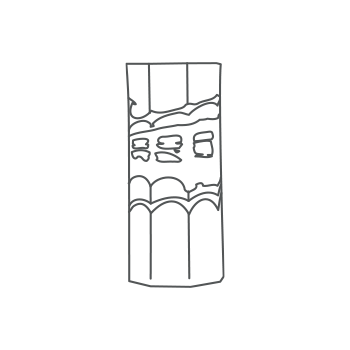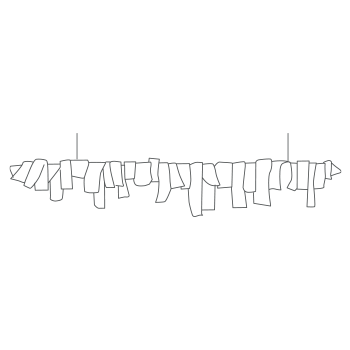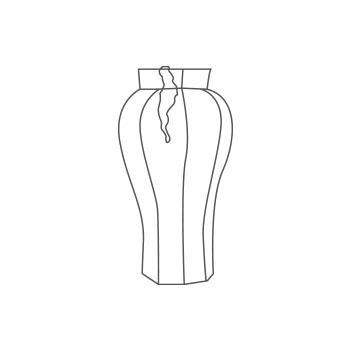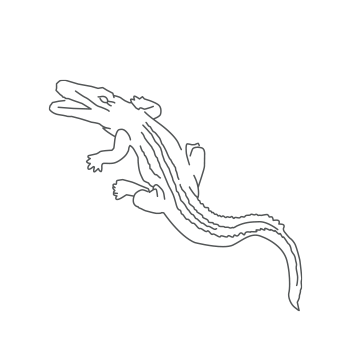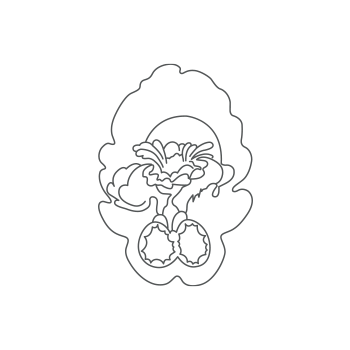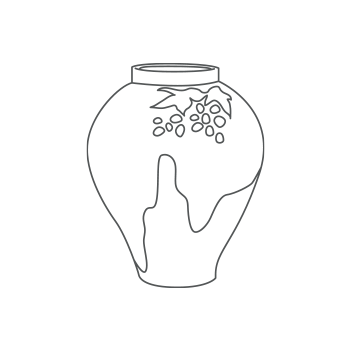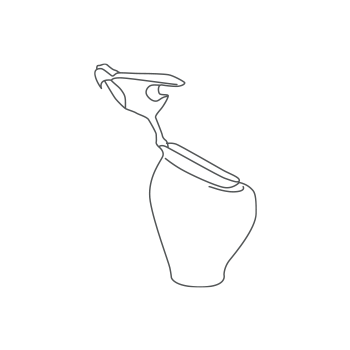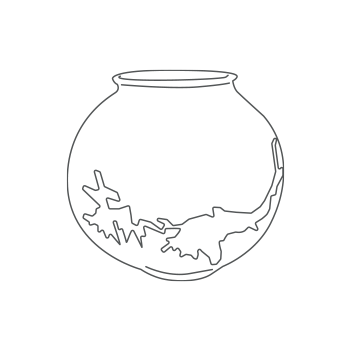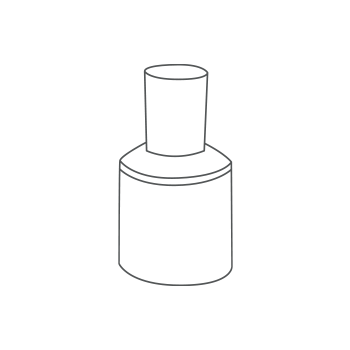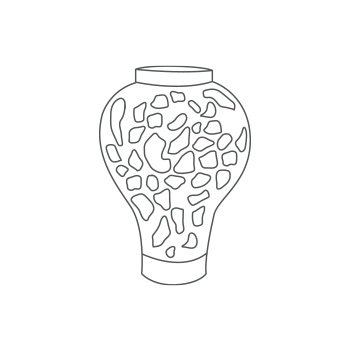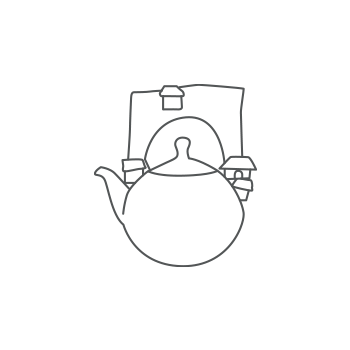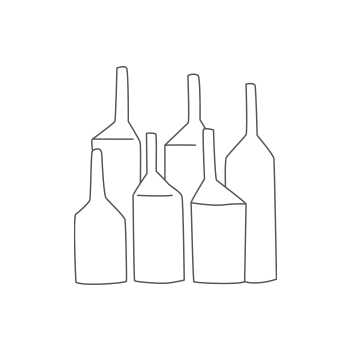청주시한국공예관 x 서울공예박물관
특별교류전
Korean Craft Museum x Seoul Museum of Craft Art
Special
Exhibition

문화제조창 본관 3층 한국공예관 갤러리 3 -
Gallery 3,
Korean Craft Museum,
3 Floor of the
Culture Factory
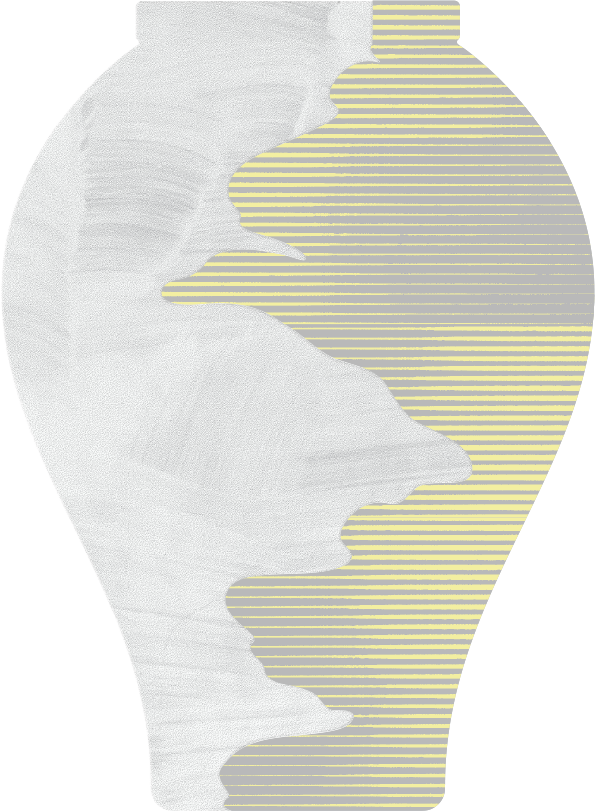

문화제조창 본관 3층 한국공예관 갤러리 3
Gallery 3,
Korean Craft Museum,
3 Floor of the
Culture Factory

한국을 대표하는 ‘공예기관’인 청주시한국공예관과
서울공예박물관이 공동기획으로 동시대 한국 공예의 다채로운
모습을 조명해 보고자 뜻을 모았습니다. 이번 만남은 지난해
서울공예박물관이 ‘2020-2021 백자공예상자 아카이브 프로젝트’
성과를 기획전시 형식으로 선보인 《백자, 어떻게 흙에다가 체온을
넣었을까》 전을 인연으로 비롯되었고, 우리는 이 전시에 소개된
동시대 ‘백자’와 청주시한국공예관이 선정한 분청사기를 더하여,
한국 도자의 현주소로 시선을 확장해 보았습니다. 두 기관의
학예사들이 모여 우리에게 친숙한 도자공예를 찬찬히
들여다보면서, 어쩌면 익숙함으로 인해 미처 인지하지 못했던
색채와 질감을 찾아내고, 이를 빚어내기 위한 공예가의 치열한
노력과 숨은 이야기에 귀 기울여 보며, ‘백색(White)’에 내포된
우리 도자공예의 또 다른 가능성을 제시합니다.
이 땅의 도자공예의 전통과 내공을 응집하여 조선시대에 탄생한
‘분청사기’와 ‘백자’는 지금까지도 우리에게 사랑을 받는 한국
공예의 정수입니다. 또한 외형적으로는 ‘백색’의 장식요소와 이를
기반으로 다양한 색채와 질감으로 변주되는 공통점이 있습니다.
이번 전시에서는 동시대 22명 작가들의 작품에 보이는 조형언어를
네 개의 관점에서 나누어 구성하고, ‘백색을 품은 백자와
분청사기의 우수작품을 엮은 작품집’이라는 의미를 담아 《화이트
앤솔러지》 Anthology of White로 여러분과 만나게 되었습니다.
이들 작품과 ’백자공예상자‘등에 수집된 제작과정물에는 오늘날
지역과 장르의 경계가 무너지고 있는 제작환경의 변화 속에서도,
자연의 재료를 가공하여 쓰임과 아름다움을 창조하고 공예의
근본을 이어가고 있는 동시대 도예가들이 어떻게 흙에다가
생명력을 불어넣는지 그 고민의 순간이 오롯이 담겨 있습니다.
‘흙’이라는 재료에서 시작했지만 다양한 방식으로 흙을 조련하여
빚어낸 작품들과의 만남이, 어느 봄날에 우연히 펼친 한 권의
앤솔러지(Anthology: 모음집)처럼 여러분들에게 흥미로운 발견과
다채로운 울림의 시간이 되기를 바랍니다.
The Korean Craft Museum and Seoul Museum of Craft Art, both
prominent craft centers of Korea, joined forces to spotlight
the diversity of contemporary Korean craft. The partnership
began in 2022 with a special exhibition, White Porcelain: How
Have We Humans Breathed Life into Soil?, hosted by the Seoul
Museum of Craft Art on the outcomes of the White Porcelain
Craft Box Archive Project. By juxtaposing the contemporary
white porcelain introduced in this exhibition with buncheong
selected by the Korean Craft Museum, this exhibition offers a
broader perspective of 21st-century Korean ceramics. Curators
from both museums, in the process of exploring an art form
with which we believe we are familiar, discovered colors and
textures that had long evaded us because of such perceived
familiarity and lent an ear—for the first time—to the stories
of artists. In doing so, they considered the possibilities
that are embedded in the whiteness of Korean ceramics.
Buncheong and white porcelain, formats that were born in the
Joseon dynasty and encapsulate the over one millennium of
traditions and lifetimes of skill accumulated by their
craftsmen, remain popular among Koreans and are regarded as
highly-sophisticated crafts. For both, white serves as a
decorative element as well as a backdrop for a wide range of
colors and textures.
This exhibition is comprised of four sections, each
representing a different figurative language, and features the
creations of 22 contemporary artists. As suggested by its
title, Anthology of White, it aims to serve as a
three-dimensional “collection” of outstanding works of white
porcelain and buncheong whose whiteness is their most defining
trait. These works, as well as the tangible outcomes collected
throughout their production processes, as displayed for White
Porcelain Craft Box, give us much food for thought in an age
in which ceramics manufacturing is undergoing significant
change: namely, the breaking down of the high barriers that
existed between regions and genres. Everything in the
exhibition shows how ceramists are altering and finding new
uses for nature’s materials—the age-old task of breathing life
into clay.
We hope that the artworks you see today, all of which began
from the most basic of materials and were shaped in diverse
ways before being placed before us, give all visitors the
excitement of discovering something new and much-needed
emotional rejuvenation—like reading an anthology selected on a
whim—in these final days of spring.

참여작가
-
Part 1.
흰으로부터
From White
; Surface and Color -
Part 2.
오래된 새로움
A Storied Newness
-
Part 3.
재료의 어울림
Hybridity
-
Part 4.
외양의 언어
Evolving
Appearances
흰으로부터 From White : Surface and Color
작가의 손을 거친 흰 흙이 빚어낸 다양한 자태의 백자와 회흑색의 태토 위에 하얀 흙이 수놓아진 분청은 ‘희다’는 표현으로 담기에는 모자랍니다. 다양한 도자 작품 위에 표현된 무수히 많은 ‘흰’, 그 이름 뒤에 숨겨진 수많은 흰색을 제안합니다.
The outlines of white clay formed with the artist’s hands and the white clay that embellishes backdrops of grayish-black clay embody a world of possibility that is too vast to be properly described by the adjective “white.” There is an infinite world of white that lies just beyond it, as can be seen through the ceramic art in this section.
-
Part 1.
흰으로부터
From White
; Surface and Color -
Part 2.
오래된 새로움
A Storied Newness
-
Part 3.
재료의 어울림
Hybridity
-
Part 4.
외양의 언어
Evolving
Appearances
오래된 새로움 A Storied Newness
모든 새로움에는 오래된 이어짐이 있습니다. 많은 이들의 손에서 손으로 이어 내려온 ‘전통’을 동시대 작가의 시선으로 풀어낸 작품을 선보이며, <오래된 새로움>을 통해 과거와 현재를 이어 나가는 새로운 시각에 주목합니다.
Everything new is built upon the old. This section focuses on contemporary ceramists’ interpretations of tradition—something which, in the world of ceramic art, is passed down from one artist to the next over hundreds if not thousands of years. It considers a new way, “A Storied Newness,” of linking our past with our present.
-
Part 1.
흰으로부터
From White
; Surface and Color -
Part 2.
오래된 새로움
A Storied Newness
-
Part 3.
재료의 어울림
Hybridity
-
Part 4.
외양의 언어
Evolving
Appearances
재료의 어울림 Hybridity
오늘날 도자는 본연의 발전을 추구하면서도 재료와 장르의 경계를 넘어 어울림을 모색하고 있습니다. 백자와 분청에 다른 재료를 접목하여 도자의 다양한 쓰임과 가능성을 보여주고자 합니다.
Today, the ceramic art has two objectives that it hopes to achieve simultaneously: intrinsic advancement and hybridity of materials and genres. This section showcases how white porcelain and buncheong can be mixed with other materials to gain diverse functions, raising renewed awareness of their potential.
-
Part 1.
흰으로부터
From White
; Surface and Color -
Part 2.
오래된 새로움
A Storied Newness
-
Part 3.
재료의 어울림
Hybridity
-
Part 4.
외양의 언어
Evolving
Appearances
외양의 언어 Evolving Appearances
작품의 표면, 그 외양에 주목하였습니다. 도자의 다양한 기법을 통해 완성된 형태를 감상하며, 표면을 매만지는 작가의 손길과 율동감, 그리고 그 안에 감춰진 텍스트를 읽어봅니다.
This section focuses on an artwork’s overall appearance. By exploring the outcomes produced by diverse ceramic techniques, it helps us think about the artist’s hands shaping the clay, the lively rhythm of such hands, and the stories behind the artworks they produced.

구본창 Koo Bohnchang

HA 07
Leeum, Samsung Museum of Art, Seoul
삼성미술관 리움, 서울
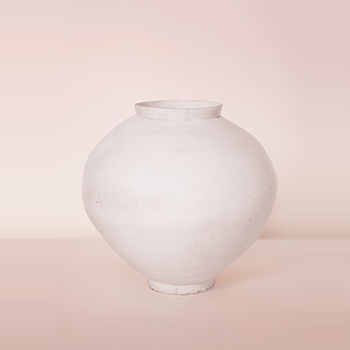
AAM 01
Asian Art Museum of San Francisco,San Francisco
아시안아트뮤지엄, 샌프란시스코
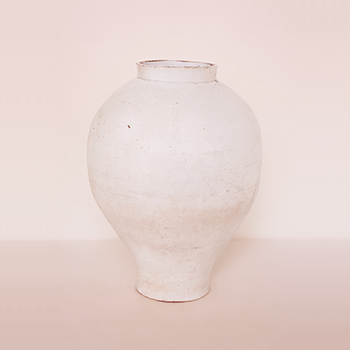
EW 02
Ewha Womans University Museum,Seoul
이화여자대학교박물관, 서울
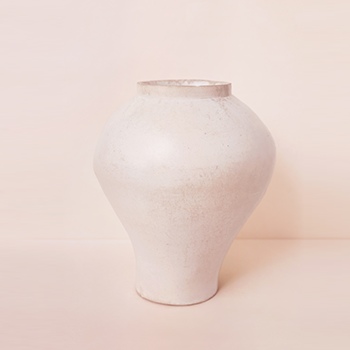
JM 03-1
The Japan Folk Crafts Museum, Tokyo
일본민예관, 도쿄
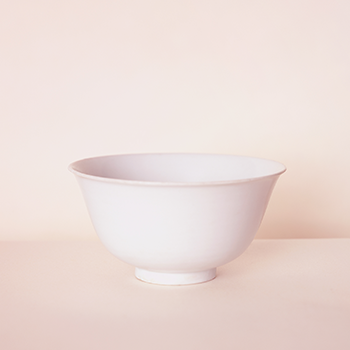
KRO 01
Koryo Museum of Art, Kyoto
고려미술관, 교토

OSK 03
The Museum of Oriental Ceramics, Osaka
오사카시립동양도자미술관, 오사카
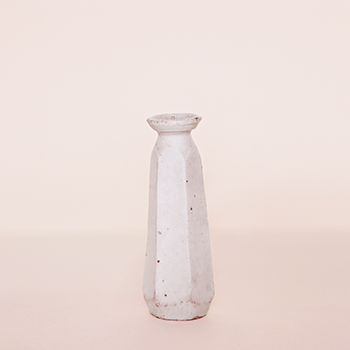
OSK 31
The Museum of Oriental Ceramics, Osaka
오사카시립동양도자미술관, 오사카
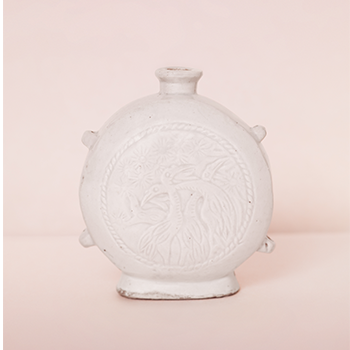
AAM 07
Asian Art Museum of San Francisco, San Francisco
아시안아트뮤지엄, 샌프란시스코

MG 10
Guimet Museum, Paris
기메 박물관, 파리
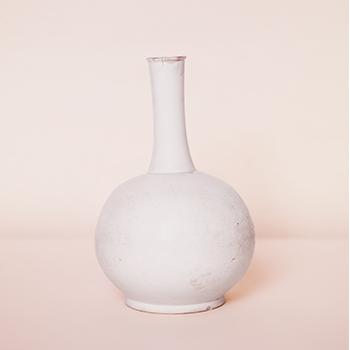
AAM 08
Asian Art Museum of San Francisco, San Francisco
아시안아트뮤지엄, 샌프란시스코
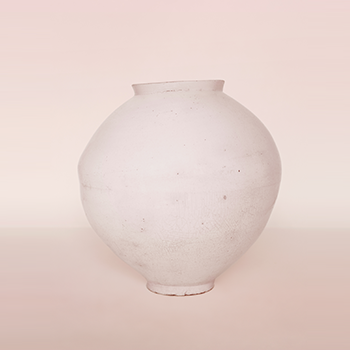
BM 04
The British Museum, London
대영박물관, 런던
백자청화파초국화무늬 호 Blue and White Porcelain Jar
서울특별시 유형문화재 제478호
조선 후기에 드물게 보이는 파초와 국화 무늬가 그려진 백자 항아리이다. 이러한 유형의 백자 항아리는 술을 담거나 꽃을 꽂는 용도로 사용되었다. 청화백자는 정해진 견양(見樣)에 따라 제작되었으나, 후기에 이르러서는 파초 등 선비들이 선호하던 문양이 새롭게 나타나기도 한다. 문양은 분원(分院)에 파견된 왕실 화원이 그렸다. 이 항아리의 바닥에는 한글 고어(古語)로 '을사 자궁 이쌍'이라고 점각(點刻)되어 있어 1845년(헌종 11) 관요에서 제작되어 ‘자궁’에 바쳐진 것으로 추정된다. ‘자궁’은 ‘慈宮’으로 추정되는데, 왕세자가 왕위에 오르기 전에 죽고 왕세손이 즉위하였을 때 그 죽은 왕세자의 빈(嬪) 또는 그가 거처하던 궁집을 가리키던 말로 알려져 있다.소장 및 정보 제공: 서울공예박물관
Seoul Metropolitan Government-designated Tangible Cultural Heritage No. 478
This porcelain jar is decorated with a design of chrysanthemums and plantain, which was rarely used in late Joseon. The jar would have been used to store liquor or as a flower vase. Generally, blue and white porcelainware was produced according to strictly-defined rules. In late Joseon, however, designs emerged that the scholar-literati class favored, including plantain leaves. The design for this jar was created by a royal painter who was dispatched to a regional kiln. The jar’s base is engraved with a phrase in ancient Korean that roughly translates to “presented to Jagung in the Year of Eulsa.” Based on this phrase, the jar is believed to have been manufactured in 1845 (11th year of King Heonjong) at a state-funded kiln and gifted to a jagung (慈宮), a title used by a king (crown grandson) to refer to the widow of a crown prince (or her home) who died before ascending to the throne, forcing his son (crown grandson) to take the throne instead.Source: Seoul Museum of Craft Art

Credit
2023 청주시한국공예관 x 서울공예박물관 특별교류전
2023. 5. 2 - 7. 2
문화제조창 본관 3층 한국공예관
갤러리 3
주최청주시
주관청주시문화산업진흥재단
청주시한국공예관
시장이범석
관장변광섭
학예실장안승현
학예팀도경민, 이들닙, 김지윤, 김동현, 윤소정, 김미완
스튜디오최효민, 김동현
교육최효민, 박선정, 김동현
시설최효민, 박용식
홍보김상은, 박선정
뮤지엄숍김지은, 김경희, 이은정, 이진아
경영지원황연우, 김지은
충청북도 청주시 청원구 상당로 314
문화제조창 본관
3-4층
Tel. 043-219-1800
www.cjkcm.org
전시
기획총괄[청주시한국공예관]
변광섭, 안승현
[서울공예박물관] 김수정, 김서란
공동기획[청주시한국공예관]
도경민, 이들닙, 김지윤
[서울공예박물관] 고미경
진행[청주시한국공예관] 이들닙,
김지윤
[서울공예박물관] 박소현, 김민화
자료출납[청주시한국공예관]
이들닙, 김동현
[서울공예박물관] 성석, 윤소라, 김연희
교육[청주시한국공예관]
박선정
[서울공예박물관] 오문선, 이효준, 박혜인,
엄갑선, 김나경
홍보[청주시한국공예관] 김상은,
박선정
[서울공예박물관] 반태영
시설최효민, 박용식
온라인전시
기획안승현, 도경민, 이들닙, 김지윤
제작(주)블루소프트
그래픽디자인피노미나
영상로그아트
사진더레이스튜디오
번역(주)투웨이트랜스
협력
공간디자인㈜씨앤씨파트너스
시공㈜이플랜
운송㈜큐비스아트
Korean Craft Museum x Seoul Museum of Craft Art Special Exhibition
2023. 5. 2 - 7. 2
Gallery 3, Korean Craft Museum, 3
Floor of the Culture Factory
HostCheongju City
OrganizerCheongju Cultural Industry Promotion Foundation
KOREAN CRAFT MUSEUM
MayerLee Beomseok
DirectorByeun Kwangsub
Chief CuratorAn Seunghyun
Curatorial TeamDo Kyeongmin, Lee Deulnib, Kim Jiyoun, Kim Donghyun, Yoon Sojeong, Kim Miwan
StudioChoi Hyomin, Kim Donghyun
EducatorChoi Hyomin, Park Seonjeong, Kim Donghyun
FacilitiesChoi Hyomin, Park Yongsik
PRKim Sangeun, Park Seonjeong
Museum ShopKim Jieun, Kim Kyounghee, Lee Eungjeong, Lee Jina
Management SupportHwang Yeonwoo, Kim Jieun
3F-4F Culture Factory, 314 Sangdang-ro, Cheongwon-gu, Cheongju-si, Chungbuk, Republic of Korea Tel +82-43-219-1800 www.cjkcm.org
Exhibition
Supervised byKorean Craft
Museum | Byeun Kwangsub, An Seunghyun
Seoul Museum of Craft Art | Kim Soojeong, Kim Seoran
Co-CuratorKorean Craft Museum
| Do Kyeongmin, Lee Deulnib, Kim Jiyoun
Seoul Museum of Craft Art | Ko Mikyung
Coordinated by Korean Craft
Museum | Lee Deulnib, Kim Jiyoun
Seoul Museum of Craft Art | Park Sohyun, Kim Minhwa
Art Storage FacilityKorean
Craft Museum | Lee Deulnib, Kim Donghyun
Seoul Museum of Craft Art | Sung Seok, Yun Sora, Kim
Yeonhui
EducatorKorean Craft Museum |
Park Seonjeong
Seoul Museum of Craft Art | O Munseon, Lee Hyojoon, Park
Hyein, Eom Gapsun, Kim Nakyung
PRKorean Craft Museum | Kim
Sangeun, Park Seonjeong
Seoul Museum of Craft Art | Ban Taeyoung
FacilitiesChoi Hyomin, Park Yongsik
Online Exhibition
PlanningAn Seunghyun, Do Kyeongmin, Lee Deulnib, Kim Jiyoun
Site BuildingBLUESOFT Co.,
Graphic DesignPhenomena
VideoLogart
PhotoThe RAY Studio
TranslationTwo-Way Trans Co.,
Cooperation
Space DesignCNC Partners Co.,
ConstructionExcellent Planning corp.
TransportationQbis Art Co.,




